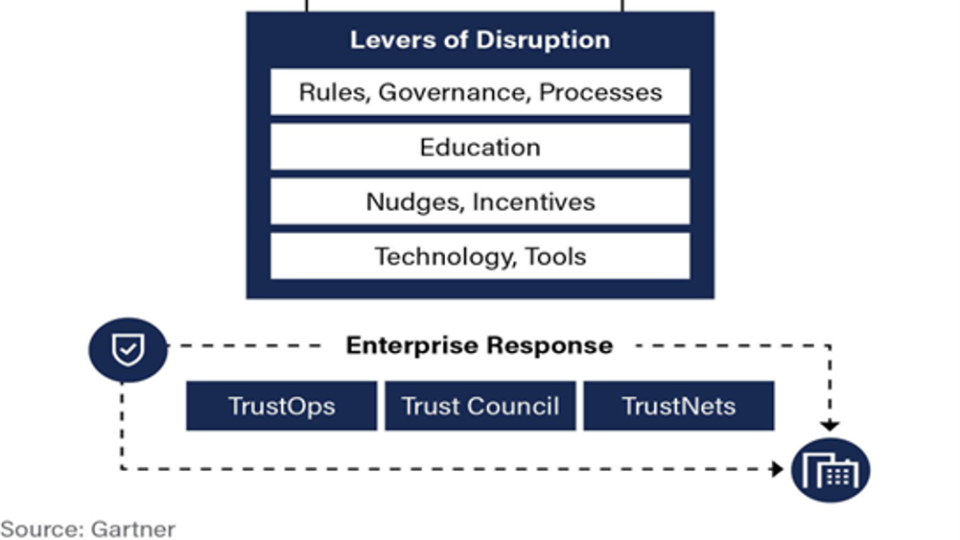
With peer-group members growing 20% faster and earning 28% higher margins, community is fast becoming the dividing line between leaders and laggards.
For years, the managed services sector has been painted as a fiercely independent space, with thousands of small to mid‑sized providers each fighting their own battles, protecting their own client base, and rarely looking beyond their own bottom line. But something has shifted. Across the UK and globally, MSPs are leaning into a very different model that puts community, peer insight, and collaboration at its heart.
It is not just about networking or sharing war stories over coffee at a trade show. What is emerging is a far deeper and more structured ecosystem where MSPs benchmark themselves against their peers, collaborate to fill skills gaps, and even work with vendors to shape the products they sell. For some, it is a survival strategy; for others, it is a growth accelerator. For vendors, it is a brand‑loyalty engine.
Chris Pool, President of First Column IT and long‑time advocate of peer learning, captures it simply: “There are structured discussions, accountability, and peer‑level mentoring, often the group acts as a board of directors for each other’s business.” In an industry where owners can be consumed by daily firefighting, that outside perspective is priceless.
Peer pressure of the best kind
The most visible form of this community shift is in peer groups such as IT Nation Evolve, run by ConnectWise. These are not ad‑hoc meetups, they are tightly curated cohorts of non‑competing MSPs of similar size, meeting regularly to dig into operational performance, compare KPIs, and hold each other accountable for change.
And the numbers suggest it works. ConnectWise data shows members grow around 20 % faster than the industry average, with EBITDA margins 28 % higher (ConnectWise). That is partly down to structured benchmarking tools such as the Service Leadership Index®, which allows MSPs to see where they truly sit against the market, not just in terms of revenue, but profitability, efficiency, and service delivery performance.
As one peer group participant put it, “It is about seeing what ‘good’ actually looks like in practice, not just reading about it.”

Filling the gaps together
The need for collaboration is sharpened by one of the sector’s biggest headaches, the skills gap. According to Kaseya’s 2024 MSP Benchmark Report, hiring ranked as the third most pressing challenge for MSPs, with cybersecurity, automation, and integration all demanding specialist expertise (Kaseya). Nearly a third of MSPs plan to use AI to automate repetitive tasks, but more than a third say implementing it will be difficult without the right people in place.
This is where co‑working and informal alliances come in. MSPs are increasingly pooling talent for short‑term projects, sharing training programmes, or experimenting together on new platforms before rolling them out to clients. The logic is simple, it is faster, cheaper, and less risky to borrow knowledge from a trusted peer than to recruit from scratch.
For newer entrants or smaller players, this kind of community access levels the playing field, allowing them to tackle projects that might otherwise be out of reach.
Why vendors are leaning in
If MSPs are discovering the power of community, vendors are finding it even more compelling. Programmes like IT Nation Evolve do not just help providers run better businesses, they bring vendors into a trusted, high‑value conversation. By being in the room, suppliers can hear first‑hand what MSPs need, what is not working, and where the market is heading.
For a product team, that is gold dust. Community feedback has already influenced roadmap decisions for everything from PSA tools to backup platforms. The Kaseya report, for example, found that 73 % of MSPs now see cybersecurity as their top revenue driver, while 85 % view automation as indispensable. That data alone can justify investment in new integrations or security modules, but hearing it debated in a peer‑group setting adds context and urgency that surveys alone cannot deliver.
There is also the halo effect of brand loyalty. Vendors who support these communities, through sponsorship, facilitation, or even just showing up, are more likely to be top‑of‑mind when MSPs make buying decisions. And in an era where peer recommendations carry more weight than advertising, having influential community members as advocates is a powerful form of influencer marketing.
Greg Jones, now Senior Vice President of MSP Enablement at Kaseya, champions the mindset behind peer support: “These initiatives focus on strengthening relationships and delivering even greater value to our partners and the wider MSP community.”

The other side of the coin
For all its benefits, active participation in a community is not without cost. Time is the most obvious one, and for smaller MSPs it can be crippling. The most valuable groups often require multi-day meetings several times a year, preparation of detailed business metrics for peer review, and regular follow-up actions. For a small provider where the owner is also the head of sales, lead engineer, and HR manager, that can mean stepping away from billable work or urgent client demands. The return on investment may be real, but it can take time to materialise, and in the interim the pressure on day-to-day operations can increase.
There is also the issue of representation. Not all communities are truly open or evenly distributed, some have a small, well-connected core that enjoys disproportionate access to vendor leadership or decision-makers. That can be a strength if it gets the right people’s ear quickly, but it can also mean that the broader group’s priorities take a back seat.
Vendor-run communities bring another layer of complexity. While they can be well-resourced and effective at mobilising discussion, they may not always be entirely impartial. Whether consciously or not, a vendor-hosted group can tilt the conversation toward its own platforms, integrations, or market positioning. For participants, it is important to approach these forums with a clear-eyed view of where commercial interest might overlap or conflict with the best interests of the wider MSP community.
This is why vendor-neutral associations have a particular value. The newly formed Global Technology Industry Association (GTIA), emerging from CompTIA, positions itself as an independent, industry-wide body that is not tied to a single product or platform. GTIA aims to maintain a level playing field, focusing on professional standards, advocacy, and skills development across the IT channel. For MSPs wary of vendor bias, such organisations can provide a safer space for open discussion, with agendas set by the membership rather than a corporate sponsor. In theory, this allows for broader representation and ensures that the community voice reflects the needs of the whole industry, not just one corner of it.
As one MSP owner commented privately at a recent event, “The community’s value is huge, but you have to remember who is paying for the room, and sometimes it is better if we all chip in equally.”

The timing is no accident
The rise of community-driven MSP models is not happening in a vacuum. The sector is under sustained pressure from the escalating threat landscape, rising client expectations, and regulatory scrutiny. Kaseya’s own research shows 78 % of MSPs now rank cybersecurity as a top IT challenge, up from 67 % last year. The complexity of delivering these services, integrating multiple platforms, managing compliance, and staying ahead of evolving threats, means the old lone-wolf approach is increasingly unsustainable.
This is particularly acute for smaller MSPs, which make up the majority of the market. Without the resources of larger competitors, they need the efficiencies, knowledge-sharing, and pooled expertise that communities offer just to keep pace.
Sceptics might dismiss all this as a passing fad, or simply networking under a new label. But the numbers, and the voices from within the industry, suggest otherwise. As one IT Nation Evolve facilitator told me, “Once MSPs start comparing real data, not just swapping stories, they rarely go back to operating in isolation.”
And for vendors, the logic is equally clear. As Mike Puglia, General Manager of Security Products at Kaseya, put it, “Cybersecurity remains a critical concern, our research underscores the imperative for MSPs to bolster their efforts to meet rapid market demand.” Supporting the communities where these efforts are discussed and shaped is a direct route to market relevance.
The bottom line
The MSP market has always thrived on adaptability. Today, that adaptability is being supercharged by community. Whether it is formal peer groups setting the pace through benchmarking, informal co-working to plug skills gaps, vendor-facilitated forums shaping the next generation of products, or independent associations like GTIA advocating for the industry at large, collaboration is no longer an optional extra, it is a competitive necessity.
But participation comes with commitments in time, focus, and discernment. For those who strike the right balance, the rewards can be transformative. And as pressures mount, those MSPs who lean into community, rather than retreat from it, may find they not only survive the next wave of challenges, but emerge stronger, more efficient, and far more connected than before.







